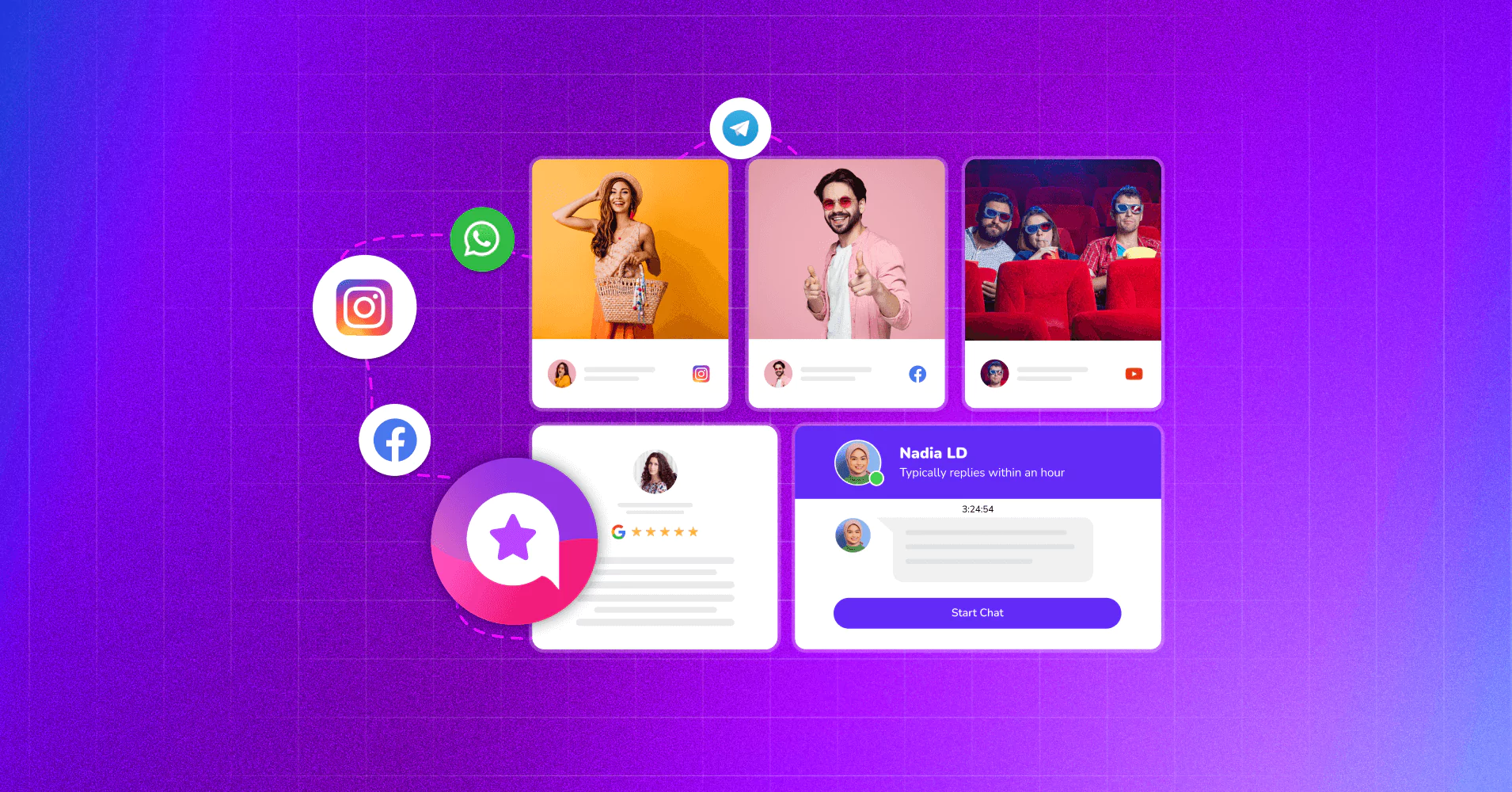
In today's hyper-connected world, social media is an integral part of our lives. Seamlessly integrating social media into your website can significantly enhance user experience, drive traffic, and boost engagement.
Benefits of Social Media Integration:
Increased Website Traffic: Social media buttons and sharing options make it easy for visitors to share your content with their networks, driving traffic back to your website.
Improved User Engagement: Social media integration encourages interaction and fosters a sense of community around your brand.
Enhanced Brand Visibility: By integrating social media elements, you can showcase your brand's social presence and increase brand awareness.
Simplified Sharing: Social sharing buttons make it effortless for visitors to share your content across various platforms, amplifying your reach and expanding your audience.
Valuable Customer Insights: Social media integration can provide valuable insights into customer behavior, preferences, and engagement.
Integration Strategies:
Social Media Buttons: Add prominent "Follow" or "Subscribe" buttons for each of your social media platforms to encourage visitors to connect with you on their preferred channels.
Social Sharing Buttons: Incorporate easy-to-use sharing buttons for Facebook, Twitter, LinkedIn, Pinterest, and other relevant platforms, allowing visitors to share your content with a single click.
Embedded Content: Embed relevant content from your social media channels, such as Instagram posts, YouTube videos, or Facebook feeds, directly into your website to enhance user engagement.
Social Media Widgets: Utilize social media widgets to display live feeds, trending hashtags, or customer reviews from platforms like Twitter, Facebook, and Instagram.
API Integration: Leverage social media APIs for seamless integration of social media login, commenting, and sharing functionalities.
Platforms to Integrate:
Facebook: The most popular social media platform, offering a wide range of integration options.
Instagram: A visually-driven platform ideal for sharing high-quality images and videos.
Twitter: A great platform for real-time updates, news, and engaging in discussions.
LinkedIn: Ideal for professional networking and connecting with industry peers.
YouTube: A powerful platform for sharing video content, including product demos, tutorials, and behind-the-scenes footage.
Pinterest: A visual discovery platform that is particularly effective for businesses in the fashion, food, and home decor industries.
TikTok: A rapidly growing platform, particularly popular with younger audiences, offering opportunities for creative and engaging content.
Best Practices:
Choose Relevant Platforms: Select the social media platforms that are most relevant to your target audience and your brand's overall marketing strategy.
Optimize Button Placement: Place social media buttons strategically on your website, such as in the sidebar, footer, or near the end of blog posts.
Customize Integration Design: Customize the appearance of social media buttons and widgets to match your brand's visual identity.
Monitor Analytics: Track key metrics such as social shares, website traffic from social media, and engagement rates to measure the effectiveness of your social media integration.
Ensure Mobile Responsiveness: Ensure that all social media integrations function seamlessly on mobile devices.
Secure User Data: Prioritize user privacy and security by ensuring that all social media integrations comply with data privacy regulations.
Regularly Update Integrations: Keep your social media integrations up-to-date with the latest platform changes and best practices.
Tools and Plugins:
Social Warfare: A popular WordPress plugin for social media sharing.
ShareThis: A comprehensive social sharing platform with a wide range of customization options.
AddToAny: A versatile social sharing tool that allows visitors to share content across multiple platforms.
Facebook SDK: The official Facebook Software Development Kit provides access to various Facebook APIs for seamless integration.
Twitter API: The Twitter API allows developers to access Twitter data and integrate Twitter functionality into their websites.
Hootsuite: A social media management platform that can be used to schedule social media posts and track social media analytics.
Buffer: A social media scheduling and analytics tool that can be used to manage and analyze your social media presence.
Measuring Success:
Track engagement metrics: Monitor key metrics such as likes, shares, comments, and mentions on social media.
Track website traffic: Monitor website traffic from social media referrals to assess the impact of your social media integration on website traffic.
Analyze conversion rates: Track conversion rates to see how social media integration impacts customer acquisition and sales.
Measure follower growth: Track your follower growth on different social media platforms to assess the effectiveness of your social media marketing efforts.
Assess customer sentiment: Monitor social media mentions and customer feedback to understand customer sentiment and identify areas for improvement.
Real-World Examples:
Nike: Nike effectively integrates Instagram into its website, showcasing user-generated content and inspiring customer engagement.
Starbucks: Allows customers to easily login to their Starbucks Rewards accounts through Facebook.
The New York Times: Seamlessly embeds tweets and other social media content within its articles, enhancing the user experience.
Sephora: Utilizes Pinterest to showcase visually appealing product images and inspire customer purchases.
Conclusion:
Seamlessly integrating social media into your website can significantly enhance user experience, drive engagement, and boost your overall marketing efforts. By implementing the strategies outlined in this post, you can leverage the power of social media to connect with your audience, build brand awareness, and drive business growth.
Resources:
Social media marketing guides: Hootsuite Blog, Sprout Social Blog
Website integration tutorials: W3Schools, WordPress documentation
Industry reports: Gartner, Forrester
Social media platforms' developer documentation: Facebook Developer, Twitter Developer
Web development communities: Stack Overflow, Reddit's r/webdev